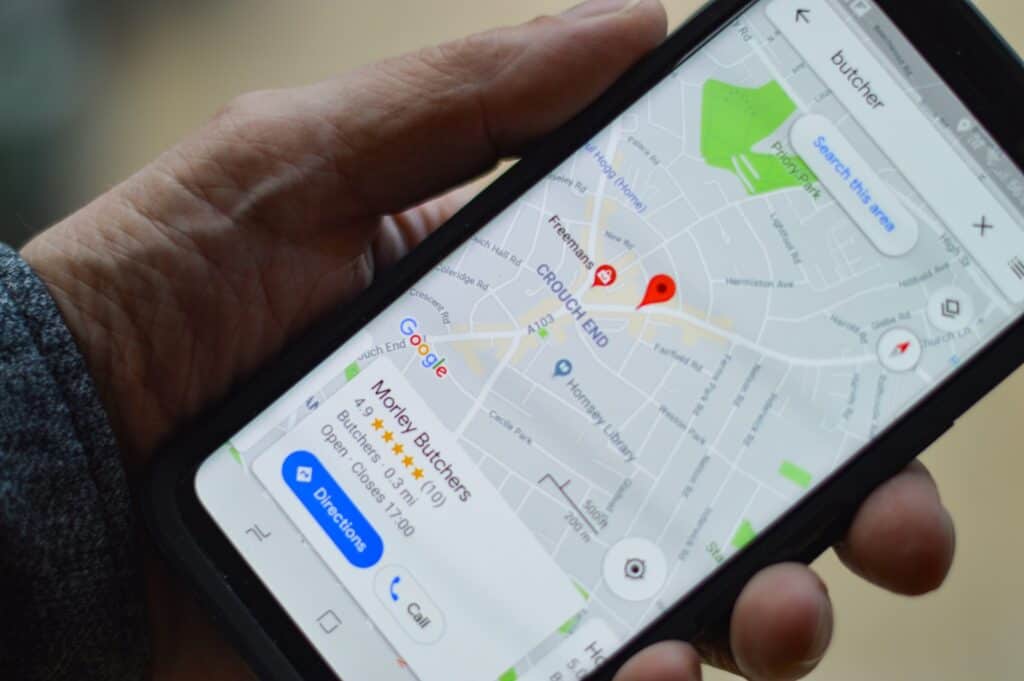Google reviews are a vital component of a business’s online presence. They appear on Google Search and Maps, significantly impacting a company’s reputation and customer decisions. Accessing these reviews is straightforward: simply search for your business name on Google Search or Maps and scroll to the reviews section.
Whether you’re a small business owner, marketer, or entrepreneur, knowing how they work — and how to respond to them — can make a major difference in your online reputation and customer engagement.
🧩 What Are Google Reviews?
Google Reviews are customer-generated ratings and comments that appear on your Google Business Profile (formerly Google My Business).
They help potential customers decide whether to visit, contact, or purchase from your business.
Each review includes:
- A star rating (1 to 5 stars)
- A written comment (optional but valuable)
- The reviewer’s name and profile
- The date the review was posted
These reviews appear in Google Search results, Google Maps, and across other Google services.
💡 Why Google Reviews Matter
1. Influence Buying Decisions
According to Google and BrightLocal research, over 90% of consumers read online reviews before choosing a business. Positive reviews can directly increase foot traffic, calls, and conversions.
2. Boost SEO and Visibility
Google uses reviews as a ranking factor. Businesses with frequent, high-quality reviews tend to appear higher in local search results.
(source: Medium – The Power of Google Reviews)
3. Build Trust and Credibility
Authentic feedback from real customers helps build transparency and trust. Even a few negative reviews can enhance credibility — as long as they’re handled professionally.
4. Provide Valuable Insights
Reviews highlight what customers love and what needs improvement, helping guide product, service, and experience enhancements.
🧭 How to Get More Google Reviews
Encouraging reviews should be a consistent part of your customer engagement strategy. Here’s how:
- Ask at the right time – Request a review right after a positive interaction or purchase.
- Make it easy – Share your Google review link via email, SMS, or receipts.
- Use signage – Add “Review us on Google” stickers or QR codes in your store or office.
- Respond to every review – Engaging with customers shows you value their feedback, which encourages more reviews.
- Avoid incentives – Google prohibits offering rewards for reviews. Keep it organic and authentic.
(source: The Best Strategies on How to Respond to Reviews on Google)
💬 How to Respond to Google Reviews
Responding thoughtfully — both to positive and negative reviews — strengthens your brand reputation and customer relationships.
✅ Responding to Positive Reviews
- Thank the customer for their feedback.
- Personalize your reply (mention their name or specific detail).
- Reinforce your brand’s values or invite them back.
Example:
“Thanks for your kind words, Sarah! We’re thrilled you enjoyed your experience with our team. We look forward to seeing you again soon.”
⚠️ Responding to Negative Reviews
- Stay calm and professional — never argue publicly.
- Acknowledge the issue and apologize if appropriate.
- Offer to resolve the matter offline (email or phone).
Example:
“Hi John, we’re sorry your experience didn’t meet expectations. Please contact us at [email] so we can make things right.”
(source: Google Support – Responding to Reviews)
🧠 Best Practices for Managing Google Reviews
- Monitor regularly – Check your Google Business Profile weekly for new reviews.
- Respond quickly – Aim to reply within 48 hours.
- Stay consistent – Use a professional and friendly tone across all responses.
- Report inappropriate reviews – Flag spam, fake, or policy-violating reviews through your Google Business dashboard.
- Use feedback for growth – Share insights with your team to improve products or service quality.
(source: HostAdvice – How to Respond to Google Reviews)
📈 The Long-Term Impact of Google Reviews
- Higher local rankings → More visibility and clicks
- Improved customer loyalty → People trust transparent brands
- Better conversion rates → Positive reviews drive action
- Increased brand authority → Consistent engagement builds a strong online presence
(source: ExpertBeacon – The Ultimate Guide to Responding to Google Reviews)
🧾 Summary: Key Takeaways
| Topic | Key Insight |
|---|---|
| What they are | Customer feedback shown on Google Search & Maps |
| Why they matter | Influence trust, SEO, and buying decisions |
| How to get more | Ask ethically and make it easy |
| How to respond | Be professional, prompt, and personal |
| Long-term value | Improves visibility, reputation, and growth |
🚀 Final Thoughts
Google Reviews are more than just ratings — they’re a reflection of your brand’s relationship with customers.
By actively managing, responding, and learning from them, you can turn feedback into your most powerful marketing tool.
Explaining Google Reviews: A Detailed Breakdown
| Aspect | Description | Example |
|---|---|---|
| What are they? | Public user-generated reviews of businesses on Google Maps and Search. | A customer writing about their experience at a restaurant. |
| Who writes them? | Anyone with a Google account can leave a review. | Google users, customers, past patrons. |
| What can be reviewed? | Businesses with a Google My Business listing, including restaurants, stores, services, and attractions. | Restaurants, car washes, dentists, museums. |
| What should be included? | Specific details about the experience, pros and cons, overall impression. | Mentioning the service received, quality of food, friendliness of staff, overall feeling. |
| Rating system | Five-star scale, with one star being the worst and five stars being the best. | Rating a bakery with four stars because the pastries were delicious but the line was long. |
| Impact on businesses | Reviews can significantly influence potential customers’ decisions and affect search rankings. | Positive reviews attracting more customers, negative reviews prompting improvement or discouraging visits. |
| Moderation & Policies | Google moderates reviews for content like spam, offensive language, and fake reviews. | Reviews promoting fake products or using insults get removed. |
| Benefits for users | Gain insights into businesses before visiting, help others make informed decisions. | Checking reviews before trying a new restaurant, sharing your experience to guide others. |
| Benefits for businesses | Get valuable feedback to improve, build trust and reputation, attract new customers. | Addressing customer concerns, highlighting positive feedback, attracting new patrons. |
| Tips for writing | Be honest and objective, focus on details, avoid personal attacks, use respectful language. | Describing the specific food items you enjoyed, mentioning the wait time without blaming the staff. |
Additional notes:
- Google encourages respectful and helpful reviews that provide genuine insights for others.
- Customers can reply to reviews, offering businesses a chance to address concerns or express gratitude.
- Users can report unhelpful or inappropriate reviews to Google.
Key Takeaways
- Google Reviews Visibility: Easily accessible on Google Search and Maps.
- Review Management: Essential for understanding customer feedback and improving services.
- Responding to Reviews: Key to enhancing online reputation and customer relations.
- Technology in Reputation Management: Tools like Semrush’s Review Management simplify monitoring and responding to reviews.
- Impact on Local SEO: Reviews significantly influence local search performance.

Accessing Your Google Reviews
On Mobile Devices:
- Open Google Maps or Google Search.
- Search for your business name.
- Tap “Reviews” to view customer feedback.
On Desktop:
- Visit Google Maps or Google Search.
- Look up your business name.
- Click “More reviews” on Maps or “View all Google reviews” on Google Search.
The Importance of Monitoring Google Reviews
Google reviews are immediately published and don’t require owner approval. However, regularly checking these reviews is crucial for understanding customer perspectives and improving your services. Responding to reviews, whether positive or negative, shows customer appreciation and can enhance your online reputation. Remember, Google favors businesses with high-quality reviews and responses, which can improve your local search performance.
Can You Disable Google Reviews?
No, Google does not allow businesses with an active Google Business Profile to disable reviews. If you encounter negative feedback, the best approach is to respond to it constructively. In cases of fake or malicious reviews, you can report them to Google for removal.
Leveraging Technology for Better Review Management
In the age of digital marketing, businesses must leverage available tools and technologies to manage their online reputation effectively. Tools like Semrush’s Review Management not only simplify the process of monitoring reviews but also provide insights to improve business strategies based on customer feedback.
Responding to Reviews: A Step Towards Improved Customer Relations
Responding to Google reviews is more than a courtesy; it’s a strategic move to enhance customer relations and online presence. A well-crafted response to a negative review can turn a dissatisfied customer into a loyal one and attract new customers impressed by your proactive approach.
The Power of Google Reviews in Local SEO
Reviews play a significant role in local SEO strategies. They provide valuable insights into customer needs and pain points, enabling businesses to tailor their services accordingly. A robust review management strategy can lead to a better online reputation and improved search engine rankings.
The Future of Online Reputation Management
As technology continues to evolve, businesses must adapt and integrate new tools for efficient online reputation management. Embracing these changes will not only streamline processes but also provide deeper insights into customer behavior and market trends.
Can You Search Google Reviews By Name?
No. There’s no direct way to search Google Reviews for names of people you want to look in to. Here are some public methods you can use to possibly get additional information:
1. Utilize Google Maps:
- Open Google Maps and search for the business or place you’re interested in.
- Click on the name of the place to view its details.
- Scroll down to the “Reviews” section.
- While there’s no built-in search function for names, you can manually browse through the reviews to see if any mention the name you’re looking for. You can also use your browser’s search function (Ctrl+F or Command+F) to search for specific names within the reviews.
2. Employ Third-Party Tools:
- Consider using third-party tools designed for searching and analyzing Google Reviews. Some popular options include:
- Cloodot
- Birdeye
- ReviewTrackers
- Grade.us
- These tools often offer advanced filtering and search capabilities, including searching for reviews by name.
3. Leverage Social Media:
- Check the business’s social media pages (Facebook, Twitter, Instagram) to see if they’ve shared any customer reviews that mention specific names.
- Search for relevant hashtags on social media platforms to uncover reviews that might not be directly linked to the business’s pages.
4. Check for Commenter Names:
- When viewing a particular Google Review, check if the name of the reviewer is displayed. If it is, you can search for that name on Google or social media to potentially find other reviews they’ve written.
Additional Tips:
- Narrow Your Search: If you have additional information like the person’s location or profession, include those details in your search queries to refine the results.
- Check Multiple Sources: Consult different review platforms (Yelp, TripAdvisor, etc.) to expand your search scope.
- Consider Date Filters: If you’re looking for reviews from a specific time period, use the date filter options available on some platforms.
Real-World Applications and User Experiences
Utilizing Google reviews in real-world scenarios leads to improved business strategies, customer satisfaction, and a robust online presence. Businesses can harness these reviews to adapt to market demands, enhance customer experiences, and maintain a competitive edge.
Semrush’s Review Management Tool
Semrush offers a Review Management tool that aggregates reviews from over 70 global directories, including Google. This tool simplifies monitoring and responding to reviews, contributing significantly to efficient local SEO management.
Practical Scenarios and User Experiences
- Scenario 1: A restaurant owner regularly checks Google reviews to understand customer preferences and improve menu options, leading to increased customer satisfaction and repeat business.
- Scenario 2: A local boutique monitors and responds to Google reviews, which results in improved customer service and a higher rating on Google Maps.
- Scenario 3: A tech company uses Semrush’s Review Management tool to aggregate and analyze customer feedback from various platforms, leading to enhanced product features and user experience.




